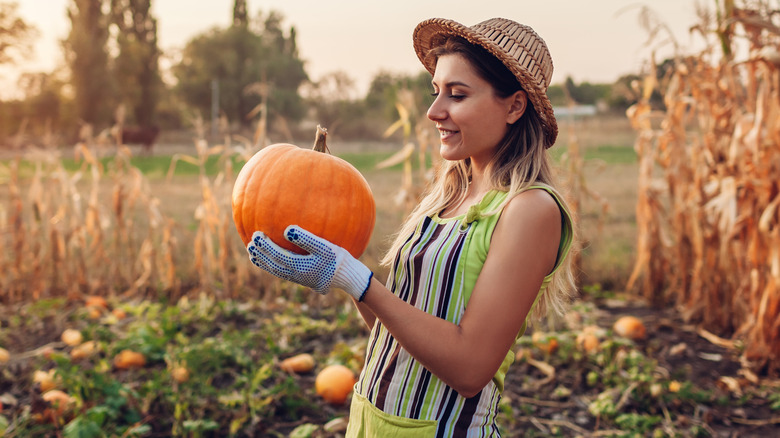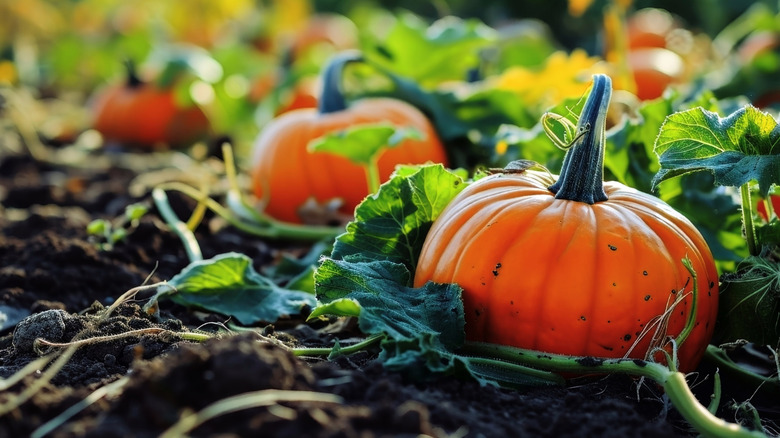How To Successfully Grow Pumpkins For A DIY-Inspired Fall
When the air starts to smell like pumpkin spice lattes, you know it's gourd season. But why head to the store to get your own pumpkin or squash decorations when you can grow your own right in your backyard? You can start carving, baking, and decorating for autumn in no time.
Creating your very own pumpkin patch to see if the Great Pumpkin actually ever does make an appearance might be easier than you think. In fact, pumpkins have called North America home for thousands of years. For a great carving pumpkin, grow the 'Autumn Gold' or 'Connecticut Field' cultivars. Opt for the spooky, dark-colored 'Black Kat' pumpkin to add extra goth to the garden. If baking pumpkin pies is more your thing, go for the aptly named sugar or pie pumpkin varieties.
However, you'll need to plan ahead. Pumpkins need about three months' worth of growing time. This means if you want gourds in time for Halloween and you live in a temperate climate, the perfect planting time for pumpkins might be late spring or early summer when the soil temperature rises enough to be cozy for seeds. That usually means at least 65 degrees. If you live in warmer states, you could probably get away with a mid-summer planting. However, don't plant pumpkins too early or they'll ripen in summer and you'll be left with no jack-o'-lanterns come October 31.
Do this to grow and decorate with pumpkins for fall
Great Halloween pumpkins need ample space to grow. Plan for at least 50 square feet for an average-sized pumpkin plant. Pumpkins crave a lot of nutrients, so add in compost, mulch, or use rich, organic soil when planting. You'll probably need to fertilize with nitrogen, and then later with phosphorous or potassium, as it develops. Choose a roomy spot with lots of sun when planting most types of squash seeds. Pumpkins won't grow well in the shade, and they'll likely produce fewer gourds.
Most types of pumpkins grow best in U.S. Hardiness Zones 3 through 7, but as long as the weather won't get too hot or too cold during the growth period, other growing zones may work as well. Seeds should be planted about 2 inches down and at least 2 feet apart. Watch for powdery mildew, bacterial wilt, and other pests or diseases. Lightly water every other day. Blossoms should appear around two months later.
Once the pumpkins are ready to harvest, the real fun begins. You can do more than just carve pumpkins or bake with them. Miniature pumpkins, like the 'Jack-Be-Little' or 'Munchkin' cultivars, can be tucked into a decorative bowl or used to make little votive candle holders. You could use wire and a glue gun to make your own decorative pumpkin door wreath with mini gourds of all shapes and sizes. A neutral white pumpkin, like the 'Baby Boo' or 'Cotton Candy' varieties, can be made into a pumpkin topiary for your foyer. Bonus: The 'Cotton Candy' pumpkin also has culinary uses, since it tastes as sweet as its name.

